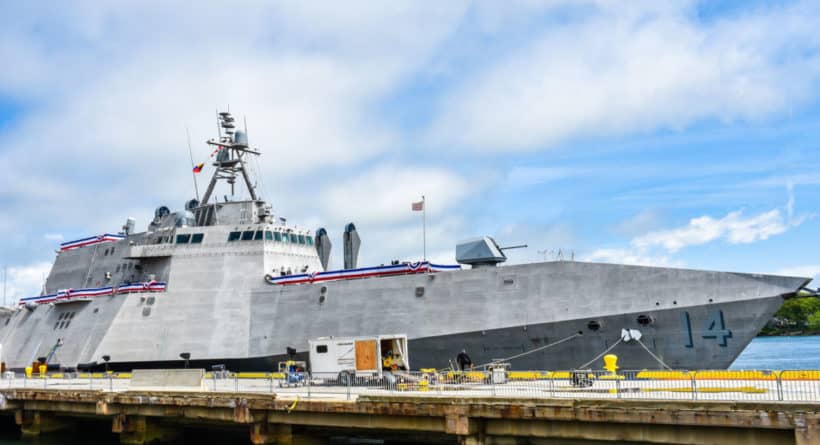A futuristic-looking vessel made its way into Portsmouth Harbor on Monday, May 21. It turned around near the equally futuristic-looking towers of the Sarah Mildred Long Bridge and anchored at the New Hampshire State Pier, where it remains. That vessel is the USS Manchester (LCS-14), the Navy’s newest warship. It will be officially commissioned during a public ceremony on Saturday, May 26.
The Manchester is an Independence-class littoral combat ship, and it represents a groundbreaking achievement for the Navy. It’s able to travel at higher speeds and can operate in more confined, shallower areas than destroyers or cruisers.
“It’s the fastest ship in the Navy,” Cmdr. Matt Scarlett said during a media tour of the vessel. “It’s modular, so you can install different mission packages based on the mission. So whether you’re conducting anti-submarine warfare or clearing mines or fighting small surface combatants, we can set up the ship so we can conduct any one of those missions.”
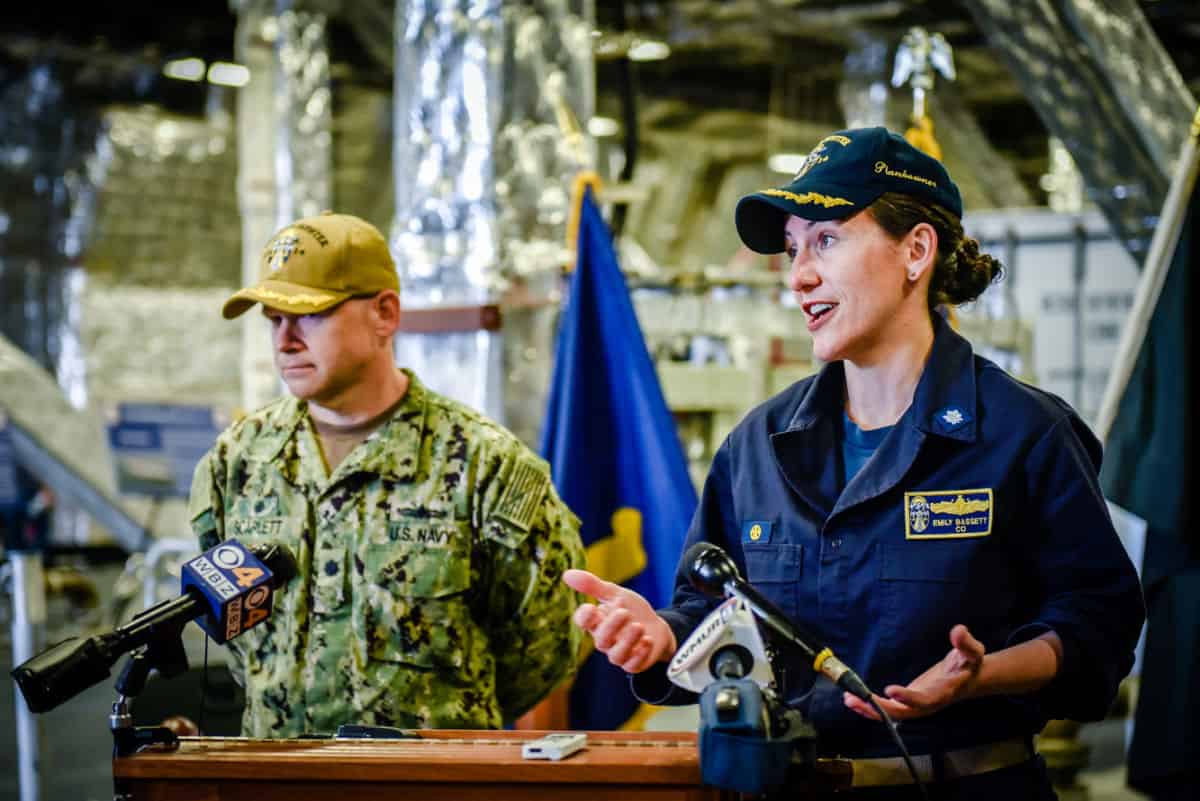
Cmdr. Matt Scarlett and Cmdr. Emily Bassett in the mission bay. photo by Anna Solo
The ship’s current mission is mine countermeasure. “So, we’ll be searching for mines and destroying mines, ultimately,” Scarlett said.
The Manchester has a relatively small crew of 70 (compared to around 250 for similarly sized ships), and its rotational crew allows a new commanding officer and crew to take over every four to six months. Right now, it’s manned by LCS Crew 214, led by Cmdr. Emily Bassett. A couple of days after the commissioning ceremony on Saturday, the Manchester will set sail for its homeport in San Diego, where Scarlett and his LCS Crew 206 take over.
This is the second ship named for the Queen City. “There are huge connections with the city of Manchester and the state of New Hampshire,” Bassett said. Among those connections, she noted, are a handful of crewmembers from the Granite State. One of those natives is Laryssa Noyes, who hails from Derry.
“It’s beautiful,” Noyes said of the ship. “We have a lot of people come on here and they just get wide-eyed and amazed by how big it is. … It’s so different from other ships.”
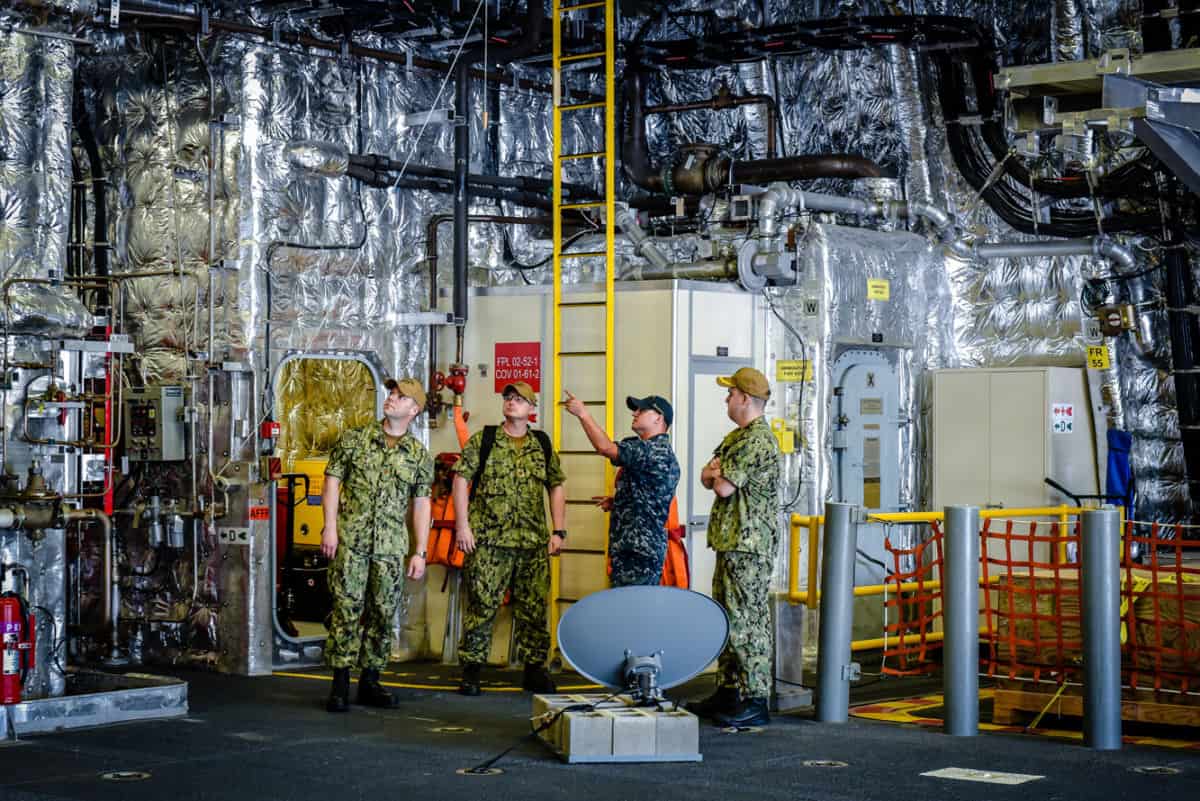
photo by Anna Solo
Here are some other interesting attributes of the USS Manchester.
Characteristics
Constructed by Austal USA, the Manchester is 418 feet long and 104 feet wide at its widest point. Its mast height is 100 feet and its draft is 14.5 feet. It’s much lighter than most Navy ships and can reach a sprint speed of more than 40 knots.
New Hampshire connections
The ship’s sponsor is U.S. Sen. Jeanne Shaheen, New Hampshire’s senior senator and former governor, and her initials are inscribed on a plaque near the mess hall. “Her initials are forever embedded into this ship,” Bassett said. Also, a local firefighter did some volunteer woodworking on the bridge, crafting tables and windowsills out of white oak harvested in Manchester.
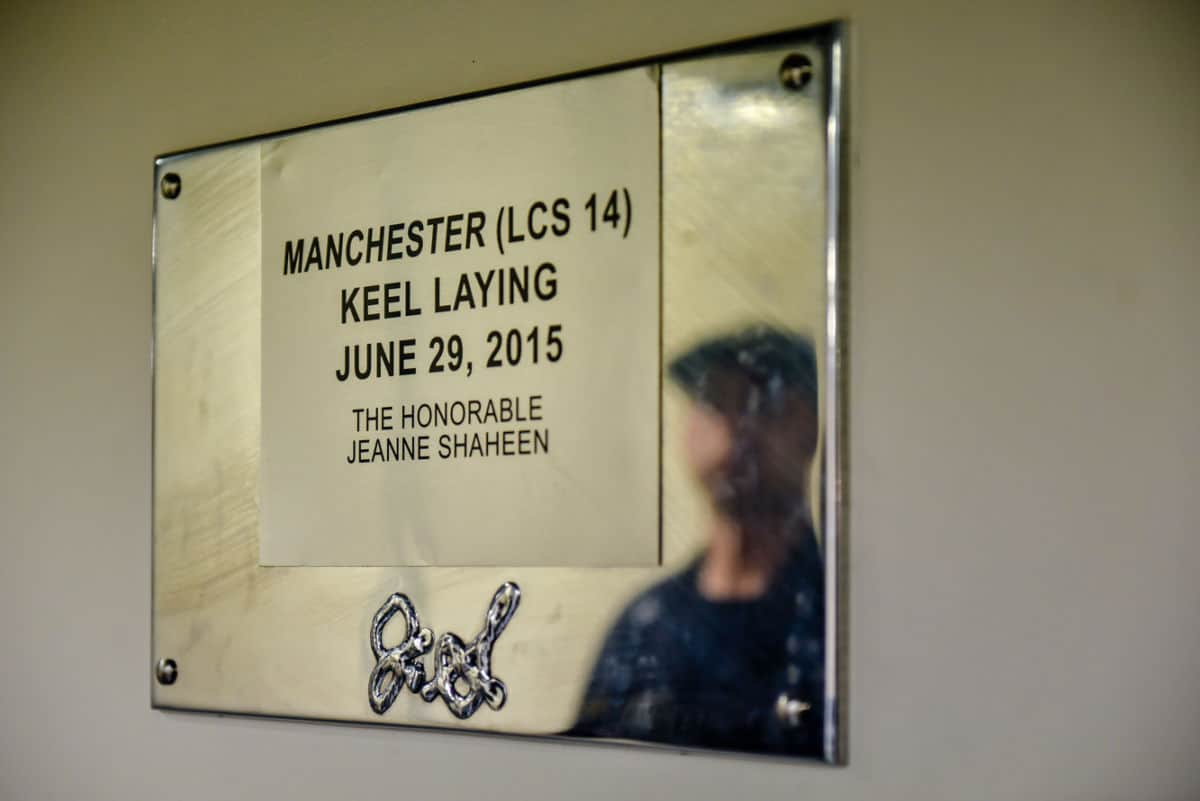
photo by Anna Solo
Mission
The ship’s primary mission is mine countermeasure, but it can also conduct anti-submarine warfare, fight surface ships, provide fleet escorts, and assist with natural disaster support, among other things. It can also recover, refuel, and launch helicopters in emergencies.
Mine detection
The Manchester uses an underwater sonar device known as a Q-20 to hunt bottom mines and provide real-time sonar images to its operators. It also employs an “airborne laser mine detection system” for locating mines near the surface, using pulsed laser light to image the entire near-surface area.
Mine neutralization
The ship uses an “unmanned influence sweep system,” deploying a surface vehicle that emits acoustic and magnetic signals that trigger mines to explode. The system is used in mine-infested waters when the Manchester is distant enough not to be damaged. The ship can also use an “airborne mine neutralization system” that carries four explosive charges to destroy individual mines. The device is lowered into the water by a helicopter and operated remotely.
Air facilities
The ship has a hangar big enough to store and service two helicopters or drones, and a flight deck that can land and launch two helicopters or drones simultaneously.
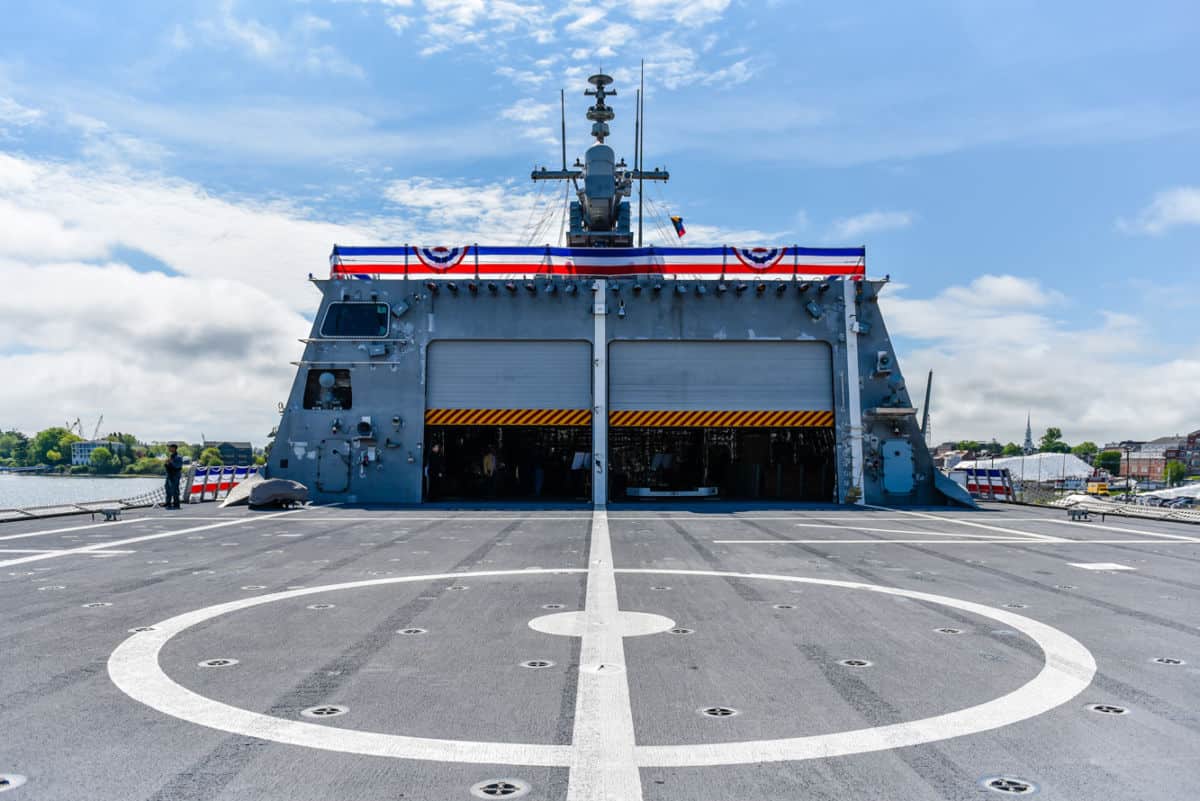
The flight deck and helicopter hangar. photo by Anna Solo
Weaponry
The ship’s base armament includes six machine gun mounts, a Bofors 57 mm gun with programmable ammunition that can fire 220 rounds per minute, and a Raytheon SeaRAM missile system for intercepting hostile aircraft and missiles.
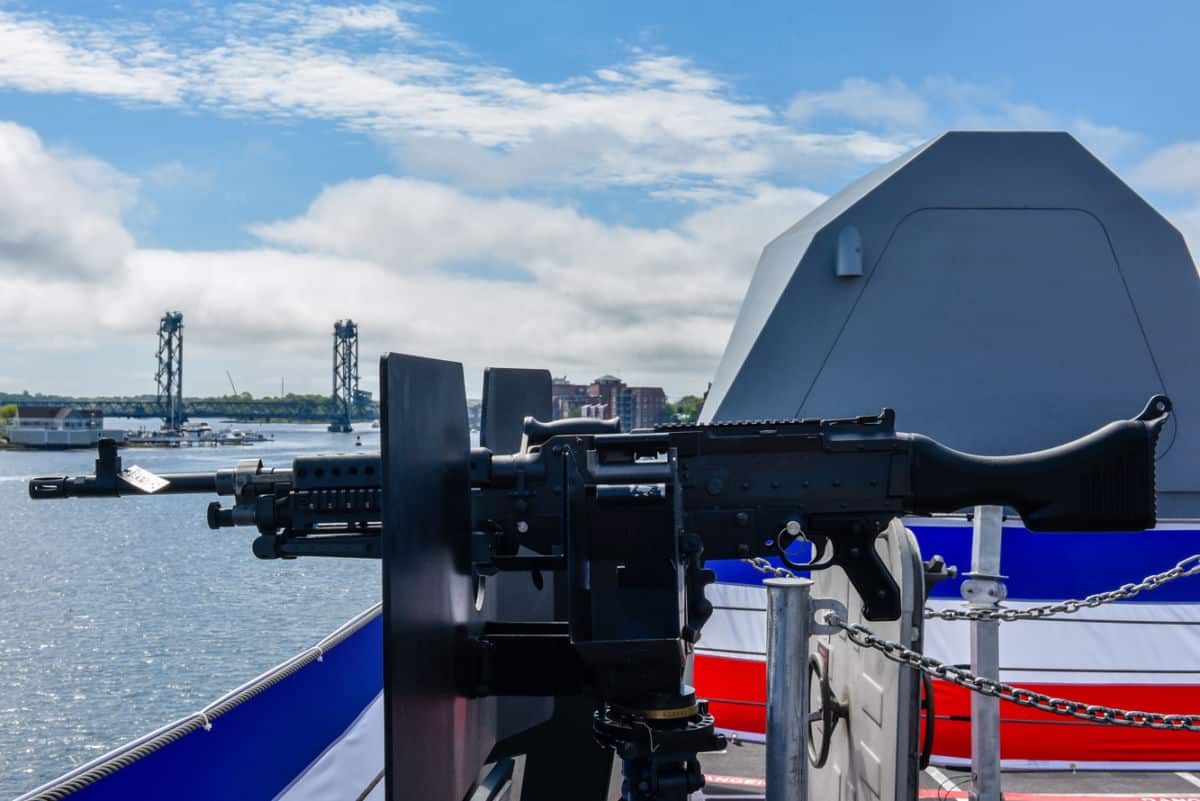
photo by Anna Solo
Propulsion
The Manchester has four independently steerable water jets, making it remarkably maneuverable. It can make a 360-degree turn within its own length, and can stop from a speed of 40 knots within 1,000 yards.
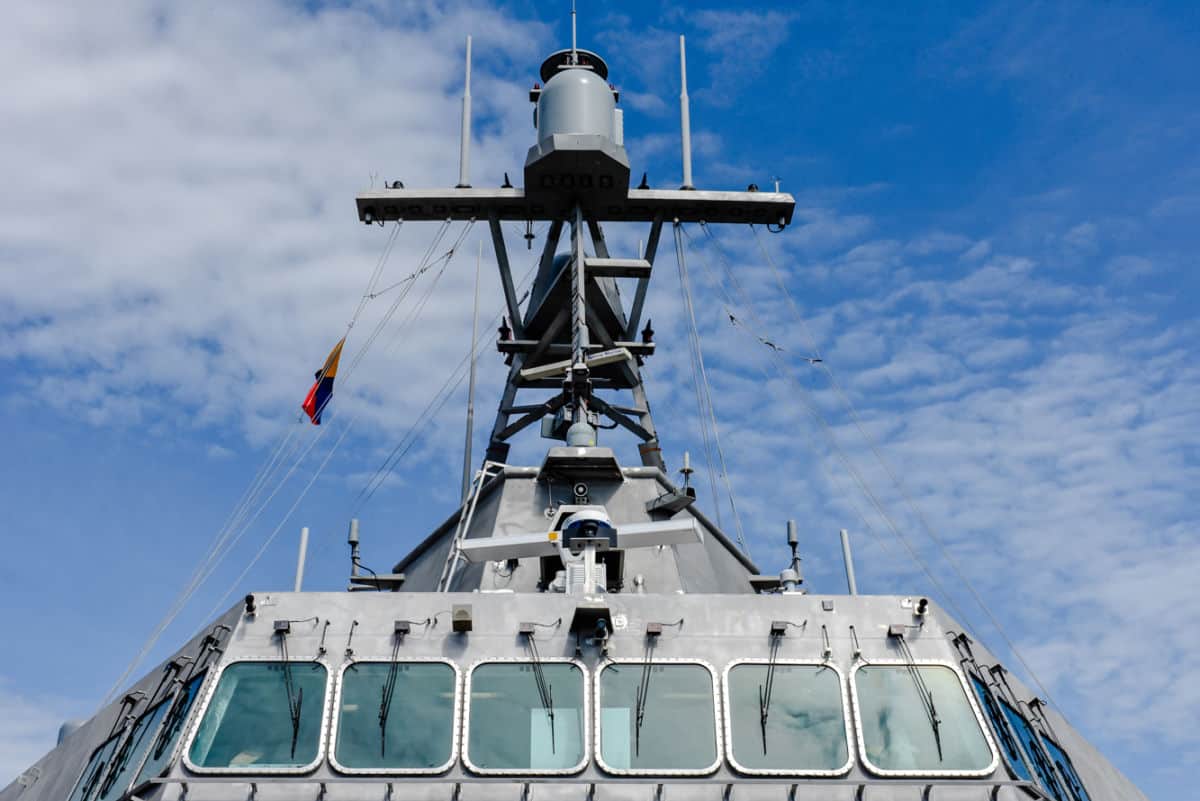
photo by Anna Solo
Electrical plant
The ship has four generators onboard and can generate enough kilowatts to power 160 homes in New Hampshire.
A/C plant
The ship’s air conditioning system is used to cool vital equipment. It can remove more than 1.3 million BTUs from the ship per hour — enough heat to melt a 4.6-ton block of ice in one hour.
Accommodations
Unlike traditional Navy ships, where large crews often bunk in the same space, the Manchester’s crew bunks in rooms of four people, and each room has its own bathroom. “This probably seems Spartan to you,” commented one sailor, “but this is like heaven.” There is also a gym and a relatively spacious mess hall (by Navy standards). Higher-ranking officers have even more luxurious accommodations, with two people per room. Take a tour of the USS Albacore, with its alarmingly tight hallways and tiny bunks, and you’ll notice the difference.
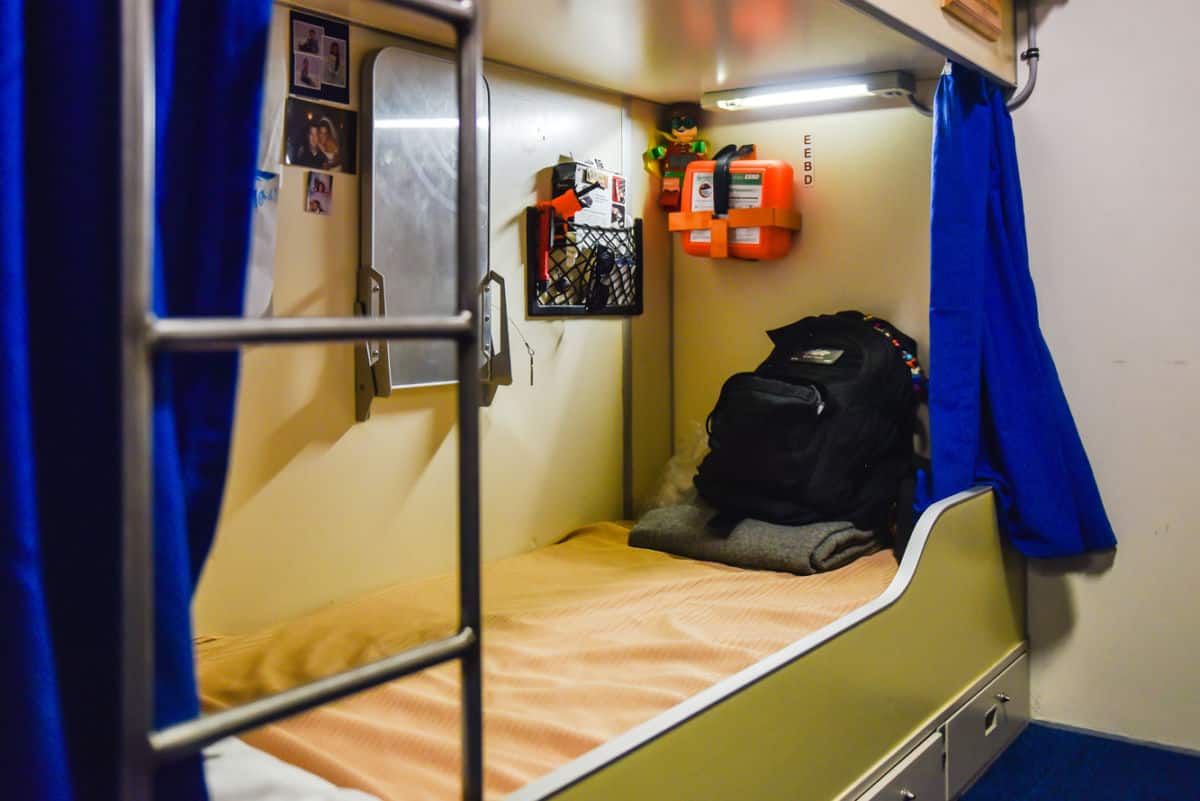
A crew bunkroom. photo by Anna Solo

